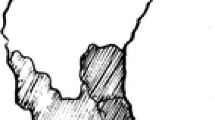Summary
Subluxation of the patella may produce pain and instability in young people. However its classification, diagnosis and treatment are controversial. We have used computerized tomography (CT) to measure the amount of lateral shift of the patella and the angle of tilt to the femur in patients with subluxation. The mean lateral shift was 31.4% and the angle of tilt 31.8 degrees. These values are significantly greater than those obtained from conventional axial radiographs or in arthrographic axial views.
We have obtained interesting evidence that the rate of lateral shift apparently increased on voluntary contraction of the quadriceps muscle (Q-contracted). With the quadriceps contracted, the mean rate of the lateral shift in the affected knees showed a significant increase (+ 27.7%) compared to that in normal knees (+ 14.0%).
We have reviewed 40 knees treated by operative realignment with a mean follow-up of 27 months. The mean rates of lateral shift measured from CT-image in the knees before operation improved significantly to the normal range at follow-up, both with the quadriceps relaxed and contracted. The results evaluated by Insall's criteria were “excellent” in 13 knees; “good” in 22; “fair” in 3 and “poor” in 2. The satisfactory group (those with excellent and good results) revealed an improvement in lateral shift when the quadriceps was contracted, while the unsatisfactory group (fair and poor results) did not.
Résumé
La subluxation de la rotule peut entraîner chez les sujets jeunes des douleurs et une instabilité. Cependant, la classification, les critères du diagnostic et le traitement sont sujets à controverse. Nous avons utilisé la tomodensitométrie (TDM) pour mesurer l'importance du déplacement externe de la rotule et son inclinaison par rapport au fémur dans un groupe de malades présentant une subluxation. La déviation moyenne était de 31,4% et l'angle d'inclinaison de 31,8 degrés. Ces chiffres étaient significativement-plus élevés que ceux obtenus à partir de radiographies conventionnelles ou d'arthrographies axiales.
Nous avons montré que le déplacement externe de la rotule augmente lors de la contraction volontaire du quadriceps. Lorsque le quadriceps est contracté, la déviation augmente de 27,7% sur les rotules subluxées contre 14% dans les genoux normaux.
Nous avons revu 40 genoux traités par une opération de réalignement, avec un recul moyen de 27 mois. Le taux moyen de déviation externe, mesuré par TDM, s'est amélioré significativement jusqu'à des chiffres normaux, que le quadriceps soit relâché ou contracté. Les résultats, évalués selon les critères d'Insall, sont «excellents» pour 13 genoux, «bons» pour 22, «assez bons» pour 3 et «mauvais» pour 2. Le groupe des résultats satisfaisants (excellents et bons) présente une diminution du déplacement de la rotule même lors de la contraction du quadriceps, contrairement au groupe des résultats «assez bons» et «mauvais».
Similar content being viewed by others
References
Aglietti P, Insall JN, Cerulli G (1983) Patellar Pain and Incongruence. I: Measurements of Incongruence. Clin Orthop 176: 217–224
Bandi W (1972) Chondromalacia Patellae und Femoropatellare Arthrose. Atilogie. Klinik und Therapie. Helvetica Chirurgica Acta, Supplementum 11, Schwabe, Basel Stuttgart
Baulth W, Mann M (1977) Medialversetzung der Tuberositas Tibiae und Gleichzeitige Vorverlagerung. Z Orthop 115: 252–255
Campbell WC (1980) Operative Orthopedics. 461, 6th Ed, Mosby, St. Louis
Ficat RP, Hungerford DS (1977) Disorders of the Patellofemoral Joint. Williams and Wilkins, Baltimore
Fox TA (1975) Dysplasia of the Quadriceps Mechanism. Hypoplasia of the Vastus Medialis Muscle as Related to the Hypermovile Patella Syndrome. Surg Clin North America 55: 199–226
Fukubayashi T, Kurosawa H, Doki T (1977) Recurrent Subluxation of the Patella. The Knee 3: 37–45
Green WT (1965) Recurrent Dislocation of the Patella. Its Surgical Correction in the Growing Child. J Bone Joint Surg 47-A: 1670
Hughston JC (1968) Subluxation of the Patella. J Bone and Joint Surg 50-A: 1003–1026
Insall JN, Aglietti P, Tria Jr AJ (1983) Patellar Pain and Incongruence. II: Clinical Application. Clin Orthop 176: 225–232
Isu K, Kato T, Sasaki T, Susuda K, Kagi T, Monji T (1980) Articular Cartilage after Shaving and Drilling of the Articular Cartilage. Arthroscopy 6: 47–50
Larson RL, Cabaud HE, Slocum DB, James SL, Keenan T, Hutchinson T (1978) The Patellar Compression Syndrome; Surgical Treatment by Lateral Retinacular Release. Clin Orthop 134: 158–167
Laurin CA, Levesque HP, Dussault R, Labelle H, Peides JP (1979) The Abnormal Lateral Patello-femoral Angle; A Diagnostic Roentgenographic Sign of Recurrent Subluxation. J Bone and Joint Surg 60-A: 55–60
Laurin CA, Dussault R, Levesque HP (1979) The Tangential X-Ray Investigation of the Patellofemoral Joint; X-Ray Technique, Diagnostic Criteria and their Interpretation. Clin Orthop 144: 16–26
Merchant AC, Mercer RL, Jacobsen RH, Cool CR Roent-genographic Analysis of Patellofemoral Congruence. J Bone and Joint Surg 56-A: 1391-1396
Mori Y, Kuroki Y, Yamamoto R, Atsumi T, Dogiya H (1979) Recurrent Subluxation Syndrome of the Patella. Rinsho Seikei Geka 14: 883–890
Mori Y, Yamamoto R, Kuroki Y (1979) Arthroscopic Findings Inrecurrent Subluxation of the Patella. Arthroscopy 4: 10–15
Palumbo PM (1981) Dynamic Patellar Brace. Am J Sports Med 9: 45–49
Trillat A, Dejour H, Couette A (1964) Diagnostic et Traitement des Subluxations Recidivantes de la Rotule. Rev Chir Orthop 50: 813–824
Yagi T, Matsuno S, Kato T, Sasaki T, Susuda K, Kyogoka M (1982) The Use of Computed Tomography for Measurement of Calcaneal Adduction in Congenital Clubfoot — Comparison between the Arthrography and CT-Scan — J Foot Surg 3: 8–13
Yagi T, Sasaki T (1986) Tibial Torsion in Patients with Osteoarthritis of the Knee. Clin Orthop (in press)
Author information
Authors and Affiliations
Additional information
Read at the 16th Congress of the Société Internationale de Chirurgie Orthopédique et de Traumatologie, City of London, England
Rights and permissions
About this article
Cite this article
Sasaki, T., Yagi, T. Subluxation of the patella. International Orthopaedics 10, 115–120 (1986). https://doi.org/10.1007/BF00267752
Published:
Issue Date:
DOI: https://doi.org/10.1007/BF00267752




